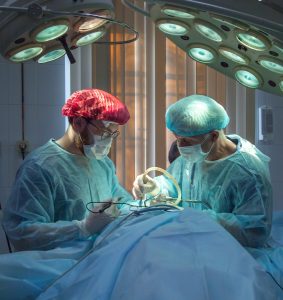
Do you want to know more about fat grafting before deciding to get the surgery done? Like any cosmetic treatment, fat transfer, also known as fat grafting, is subject to many misconceptions and misinformation. During consultations, the best Peoria oculofacial plastic surgeon will answer your questions to allay your fears regarding fat and the fat grafting process. In this article, we dispel some of the most widespread misconceptions regarding fat grafting:
- The fat will go away
Fat grafting entails removing fat from another area, processing, and injection. Some fat cells may be destroyed during the process. Liquid (injected to decrease pain and bleeding), blood, and non-viable fat cells will be removed, although some will still be injected. Moreover, even healthy fat cells in the breast may be deprived of oxygen and nutrients because of abnormal blood flow. As a result, not all injected volume consists of viable fat cells that receive enough nutrition and oxygen. Your body will absorb everything that is not healthy, leaving you with just the fat. In addition, the operation will cause edema that will need time to subside. But the fat you have already had for two months is probably here to stay. Breast size, however, is very sensitive to fluctuations in body mass index.
- When you have a fat graft, you look fat
Again. The opposite is true. Someone who says such may be taking the procedure’s name too literally. You have told your surgeon that you want a small increase in facial volume to help you regain some of the youthful radiance you may have lost with time. Your doctor will discuss your expectations and concerns before the surgery.
- The lumpy appearance of fat grafting makes it a risky procedure
You may disregard this myth if you are working with a skilled surgeon. Surgeons often advise against putting it around the eyes, stating, “I have seen it appear that way, therefore, don’t do it.” This belief is based on the individual’s experience with the practice or observations of similar experiences by others. Too much fat, fat placed on the incorrect plane, or fat moving in the wrong direction all contribute to the lumping effect. When applied perpendicular to the orbital rim, small quantities of fat (about one-fifth of a rice granule) inserted extremely deeply into the skin by skilled practitioners almost eliminate the risk of apparent lumpiness—fat grafting results in a natural and comfortable feel when performed correctly.
- Breast cancer is a result of fat transfer
This is a widespread misconception about the fat-transfer method of achieving natural breast enlargement. Some people worry that injecting themselves with fat would give them cancer or cause their existing cancer to return. Fat transfers do not enhance cancer risk; no studies link the two.
Fat grafting is a safe and effective way to add volume and shape to your body. Using your fat to enhance features, you can achieve natural-looking results with minimal downtime and risk. Don’t let myths about fat grafting stop you from achieving the body you have always wanted. Get the facts and get the look you deserve with fat grafting.
